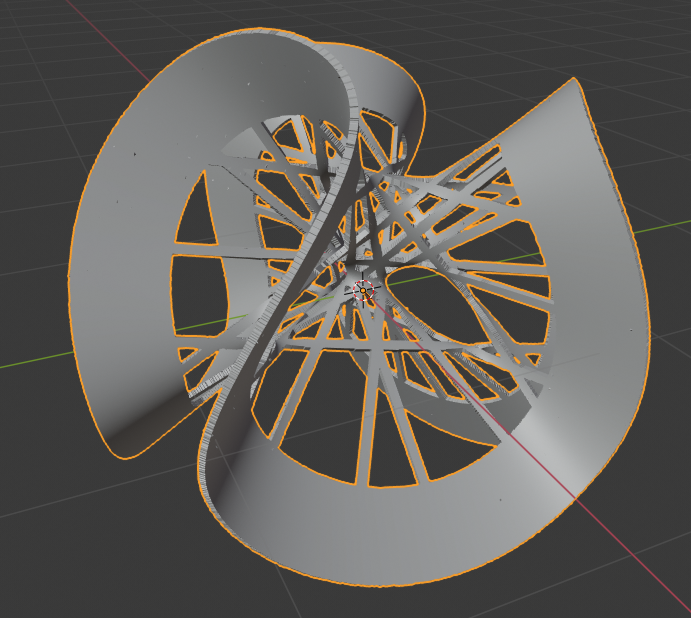Sequential is a fast, lightweight framework for multi-step forecasting of sequential data with neural networks. It supports feed-forward, recurrent (RNN and LSTM), and decoder-only Transformer models, implemented in pure Python and NumPy.
It handles both many-to-one and many-to-many tasks, where the model predicts a sequence of length n for each input. n can be any length up to the input sequence length, and Sequential takes care of any differences automatically.
Built with explorability and learning in mind, its limited modules and clear docstrings make it easy to audit, extend, and understand how neural networks function under the hood. Unlike larger frameworks such as Keras, TensorFlow, and PyTorch, which offer extensive, feature-rich APIs across many domains, Sequential focuses on time-series forecasting, delivering a simpler yet highly capable interface for deep learning.
Benchmarking and a blog series detailing the framework’s development are coming soon.
Sequential requires Python >= 3.12 and NumPy >= 2.0.0. To install, clone the project and run:
CLI tools & Jupyter notebooks (adds Pandas, Matplotlib):
Development & testing (adds Pytest):
Sequential can be used from the command line or imported into custom scripts.
Two command line tools are available in the sequential/scripts/ directory:
This script provides an automated pipeline for training models, including preprocessing, fitting, validating, forecasting, and outputting CSVs and plots (for the loss, fitted values, and forecasts). It supports feed-forward, recurrent (RNN, LSTM), and Transformer models.
Parameters are passed to its run() function via a JSON file. The terminal command looks like this:
The JSON file should contain the required run() parameters you see in train.py (e.g. path to the training data, time steps, validation length), plus any defaults you want to override and model-specific parameters handled by **kwargs.
Example JSON configuration for an RNN model:
There are two example JSON files in the sequential/scripts/ directory (sequential-config-example.json and transformer-config-example.json) to help you get started, and there are more details about accepted parameters and example configs documented in train.py's docstring.
After fitting, CSV files and plots (loss, fitted values, and forecasts) are saved to model_fit/, which is created in the working directory.
(Requires .[cli] extras; see Installation section.)
After running train.py, the trained model is saved to a pickle file within the model_fit/ directory, which will be created if not present. This script processes the historical data, loads the saved model, and generates a forecast for the desired number of time steps.
Basic usage:
For a full list of options and arguments, run:
There are two jupyter notebook templates in the sequential/scripts/ directory, one for feed-forward and recurrent networks (sequential.ipynb) and the other for Transformers (transformer.ipynb). Both contain code to load historical data, run preprocessing, fit models, perform validation, and forecast beyond the historical data.
(Requires .[cli] extras; see Installation section.)
After installing Sequential, regular imports can be used to fit models and generate predictions in your own scripts. In addition to model instantiation, fitting, and forecasting, Sequential includes preprocessing functions to simplify data preparation.
Here's an example of how you could create an LSTM model with monthly time series data:
If you’re familiar with Keras or TensorFlow, Sequential might feel simpler:
-
In Keras, you often need to set return_sequences on recurrent layers. In Sequential, RNN and LSTM layers always return full sequences, and downstream Dense layers can process 3D inputs directly.
-
Compressing from more input steps to fewer output steps (e.g. 60 -> 12) usually requires workarounds in Keras. Sequential handles this automatically with time-dimension compression. See sequential/src/sequential/layers/dtc.py.
For more information on layer initialization parameters and definitions, refer to each layer class in the sequential/src/sequential/layers/ directory.
Scripting is almost identical for transformers, except for model instantiation and one preprocessing parameter:
If you’d like to use the same automated pipeline from sequential/scripts/train.py inside your own scripts, you can import its run() function. See the Command line section for more details on what train.py automates, and refer to the script itself for parameter options and definitions.
(Requires .[cli] extras; see Installation section.)
Due to the random initialization of weights and biases in neural networks, there will be slight variation between fitted models with the same architecture. One option is to fit several models and average their forecasts. A simpler option, especially when testing different parameters, is to set a random seed with np.random.seed(any_int_here). If you're using the command line script sequential/scripts/train.py, you can add a "random_seed" property with a corresponding integer to the JSON file, or pass that parameter directly when calling the run() function in your own scripts.
It's normal for the validation loss to be higher than the training loss as the validation set is separated from the input data before training. However, too large of a difference is indicative of a problem.
If the training loss is much lower than the validation loss, it suggests the model is overfitting to the training data. In the case of Dense, RNN, or LSTM models, try reducing layers or units, or adding a dropout layer. In the case of a Transformer, try reducing the number of decoder layers, reducing d_model, or increasing drop_rate.
If validation and training loss are roughly similar, the model may benefit from additional capacity (more layers, units, d_model, etc.).
If the loss plateaus at a sub-optimal level for 100+ epochs, the optimizer may be stuck in a local minimum. Try:
- Using a different random seed (to vary initial weights and biases),
- Simplifying the model and training longer; or
- Increasing model size.
If the loss oscillates from epoch to epoch instead of gradually decreasing, it may be that the learning rate is too high. Try passing a smaller alpha value in the optimizer_args of the model's initialization parameters.
Sequential includes automated tests written with pytest to cover critical aspects of the framework, including gradient calculations, layer input/output shapes, and preprocessing transformations.
To run the tests, first install the development dependencies:
Then run:
from the project root to execute all tests in sequential/tests/.
.png)



